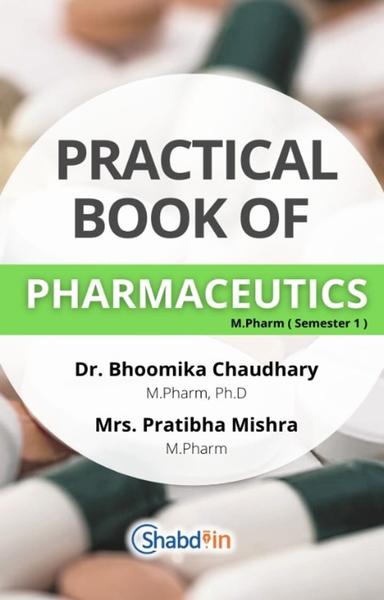AIM:To plot Heckal plot, Higuchi and peppas plot and determine similarity factors.
REQUIREMENT:
Apparatus: Beaker, Glass rod , Mortar and pestle , Sieve
REFERENCE:
Leon Lachman, Herbert E. Liberman,Joseph L. KanicThe theory and practice of industrial pharmacy special Indian edition 2009.
THEORY:
Heckal plot:
The Heckal equation is one of the most useful equation for describing the compaction properties of pharmaceutical powders. Important material properties (e.g., yield strength) of powders can be derived using Heckal analysis. Two types of Heckal analysis are in common use. One is the “out-of-die,” or “zero-pressure” method, the other is the “in-die” or “at-pressure” method. Because particles undergo elastic deformation under pressure, which tends to lower the porosity of the powder bed, the “out-of-die” method describes powder consolidation and compaction more accurately than the “in-die” method. However, “in-die” Heckal analysis has been widely used because of the speed and ease of data collection. The effects of a small change in porosity, ε, on Heckal analysis are presented mathematically. Elastic deformation causes positive deviations in the Heckal plot, and therefore leads to a yield strength that is lower than the true value. The lower the elastic modulus of the powder, the greater is the deviation from the true value. Therefore, the “in-die” method gives values of yield strength that are significantly lower than the true values for most pharmaceutical powders.
EVALUATION:
The Heckal equation is widely used for relating the relative density (D) of a powder bed during compression to the applied pressure (P). It is assumed that the densification of the powder columns follows a first order kinetics.
Thus the degree of material densification is correlated to its porosity.
The equation is written as:
Ln [1/1-D] = K P+ A
Where D = Relative density of compact at pressure P.
K = Slop of the straight line portion of Heckel plot.
A = Intercept of the straight line obtained by linear regression from the Heckel plot
Py = Mean yield pressure which is the reciprocal of K. The slop of Heckel plot was intended to give a measure of plasticity of a compressed material. Greater slops indicated a greater degree of plasticity of material.
The slop was also related to the yield strength (Y) of the material by the equation
K = 1/3 Y.
The reciprocal of K to be the mean yield pressure (Py) in order to study whether the fragmentation of particles was the predominant compaction mechanism of compaction process.
Higuchi Equation:
THEORY:
In this the use of mathematical equation to describe the release rate of drugs from matrix system initially; it was valid only for planar systems. It was later modified and extended to consider different Geometries and matrix characteristics including porous structure.
Higuchi developed an equation for the release of a drug from an ointment base and later applied it to diffusion of solid drugs dispersed in homogeneous and granular matrix In this model, it is assumed that solid drug dissolves from the surface layer of the device first; when this layer becomes exhausted of drug, the next layer begins to be depleted by dissolution through the matrix to the external solution.
In this way the interface between the regions containing dissolves drug and that containing dispersed drug moves into the interior as a front.
The following assumptions are made in deriving the mathematical model:-
1. A pseudo-steady is maintained during release.
2. The total amount of drug present per unit volume in the matrix, Co, is substantially greater than the saturation solubility of the drug per unit volume in the matrix Cs, which means that the excess of solute is present.
3. The release medium is a perfect sink at all times.
4. Drug particles are much smaller in diameter than the average distance of diffusion.
5. The diffusion coefficient remains constant.
No interaction occurs between the drug and the matrix. With reference to the figure, the change in amount of drug released per unit area, ∂M, with a change in the depleted zone thickness, ∂h, is given by Higuchi model is given by the equation:
ft = Q = DE/T√ (2A.E Cs)Cs.t
Where,
Q is the amount of drug released in time t per unit area A,
C is the drug initial concentration,
Cs is the drug solubility in the matrix media
D is the diffusivity of the drug molecules (diffusion coefficient) in the matrix substance.
T = Tortuosity of matrix.
A = Concentration of drug present in matrix per unit volume.
APPLICATIONS:
1. The application of materials used in the preparation of matrix devices is insoluble plastics , hydrophilic polymers, and fatty compounds.
2. Plastic matrices include methylacrylate-methylmethacrylate, polypolyviny1 chloride,& Polyethylene.
3. Hydrophilic polymers include methylcellulose, HPMC, sodium CMC, and carbopol 934. Fatty compounds include carnauba wax and glyceryl tristearate.
3. PEPPAS PLOT:
THEORY:
Power law equation is more comprehensive very simple and semi-empirical equation developed by Korsmeyer- Peppas which can be used to analyze data of drug release from polymers. Theequation implies that; the fractional release of drug is exponentially related to release time.
Where, M & M∞are the absolute cumulative amounts of drug released at time t and infinity respectively k is a constant incorporating structural and geometrical characteristics of the deviceand n is the exponent, indicative of the mechanism of drug release.
The Fick’s second law equation:
Can be used to express water soluble drug diffusion from a controlled release polymeric device with the form of plane sheet of thickness. Here, the diffusion coefficient of the drug, D, is assumed to be concentration independent. Under skin condition, the initial and boundary conditions can be written as,
t = 0 | -δ /2 < x <δ | /2 | 0 | c = c |
t > 0 | x = ± δ | /2 | 1 | c = c |
Where c0is the initial concentration of drug loading in the slab, and c1is the constant external concentration at the polymer / water interface.
Result
Remark:
Practical Performance (2) | Conduct in Lab (2) | Journal (2) | Observations and Results (2) | Viva-Voce (2) | Total (10) | Signature of Faculty In charge |
| | | | | | |
OBSERVATION:
S NO. | Parameter | 1 | 2 | 3 | mean |
1) | Thickness | | | | |
2) | Hardness | | | | |
3) | Friability | | | | |
4) | Weight variation | | | | |
5) | Disintegration test | | | | |
6) | Dissolution test | | | | |
Concentration(ug/ml) | Absorbanceat nm |
2 | |
4 | |
6 | |
8 | |
10 | |
EXPERIMENT NO: 15








